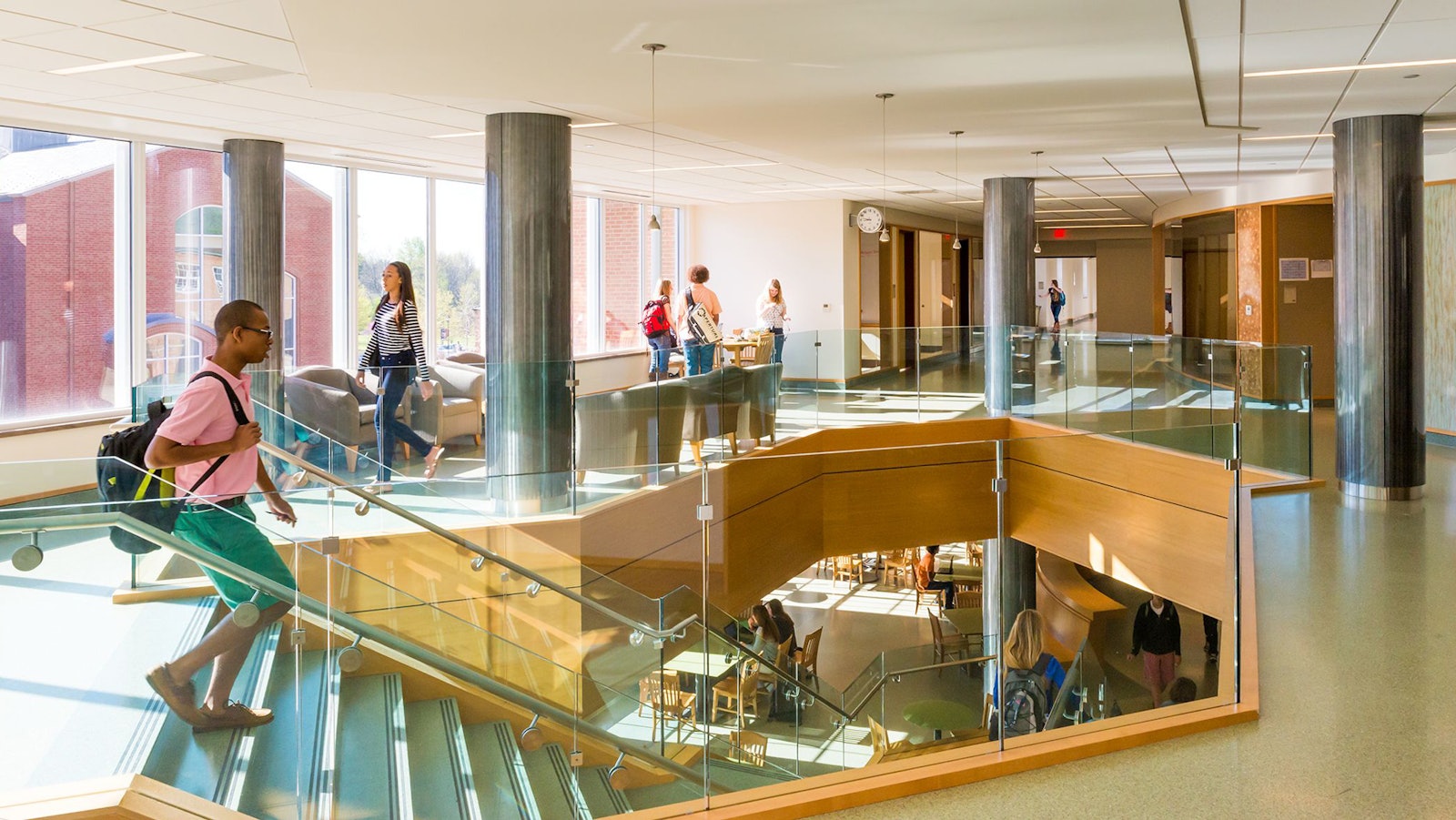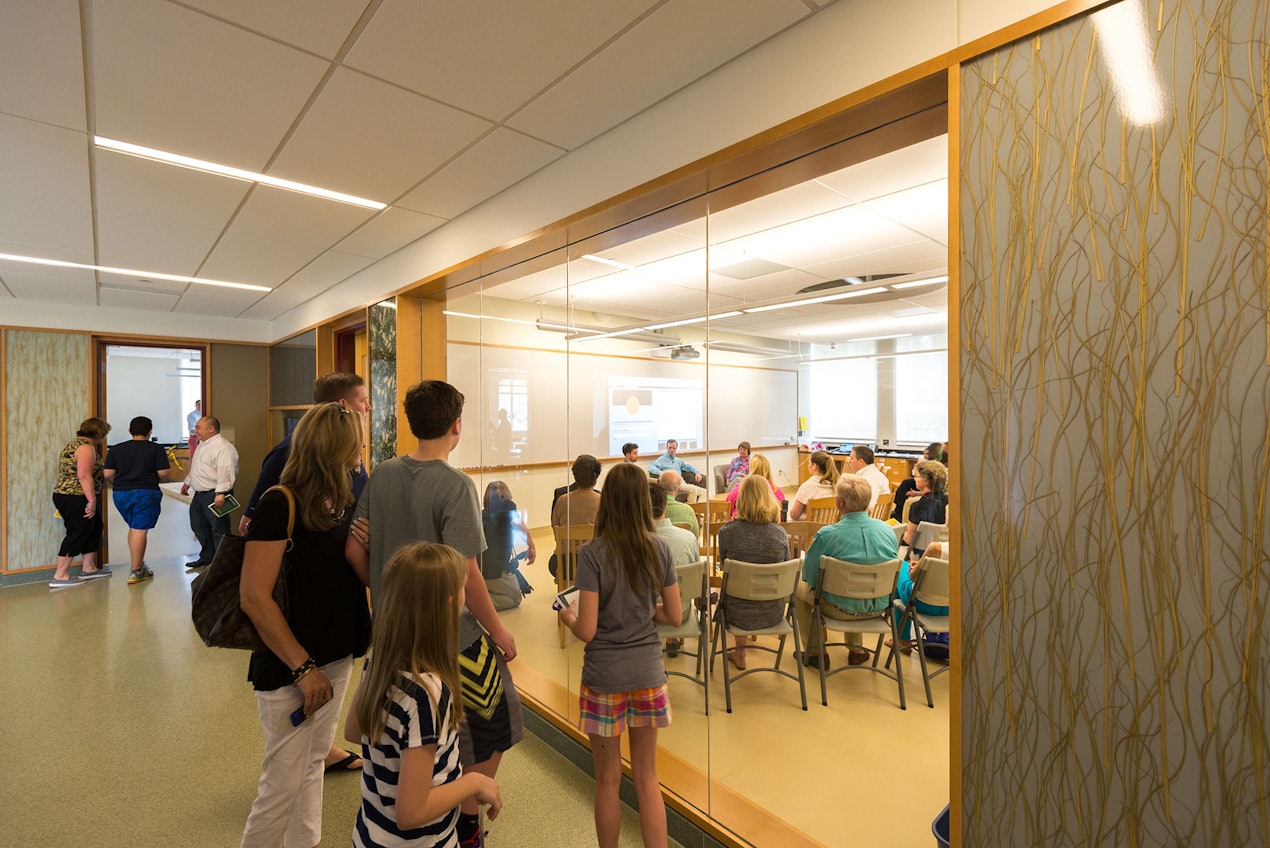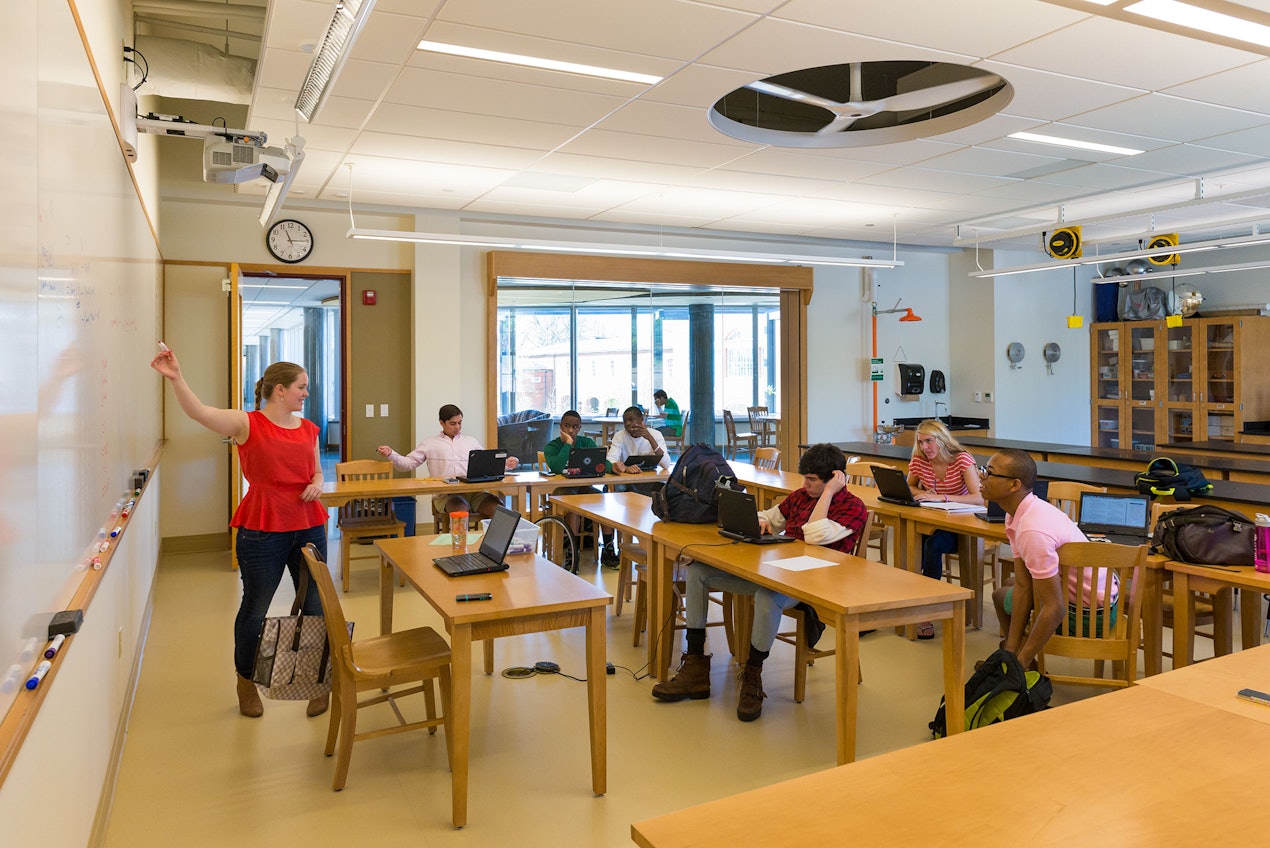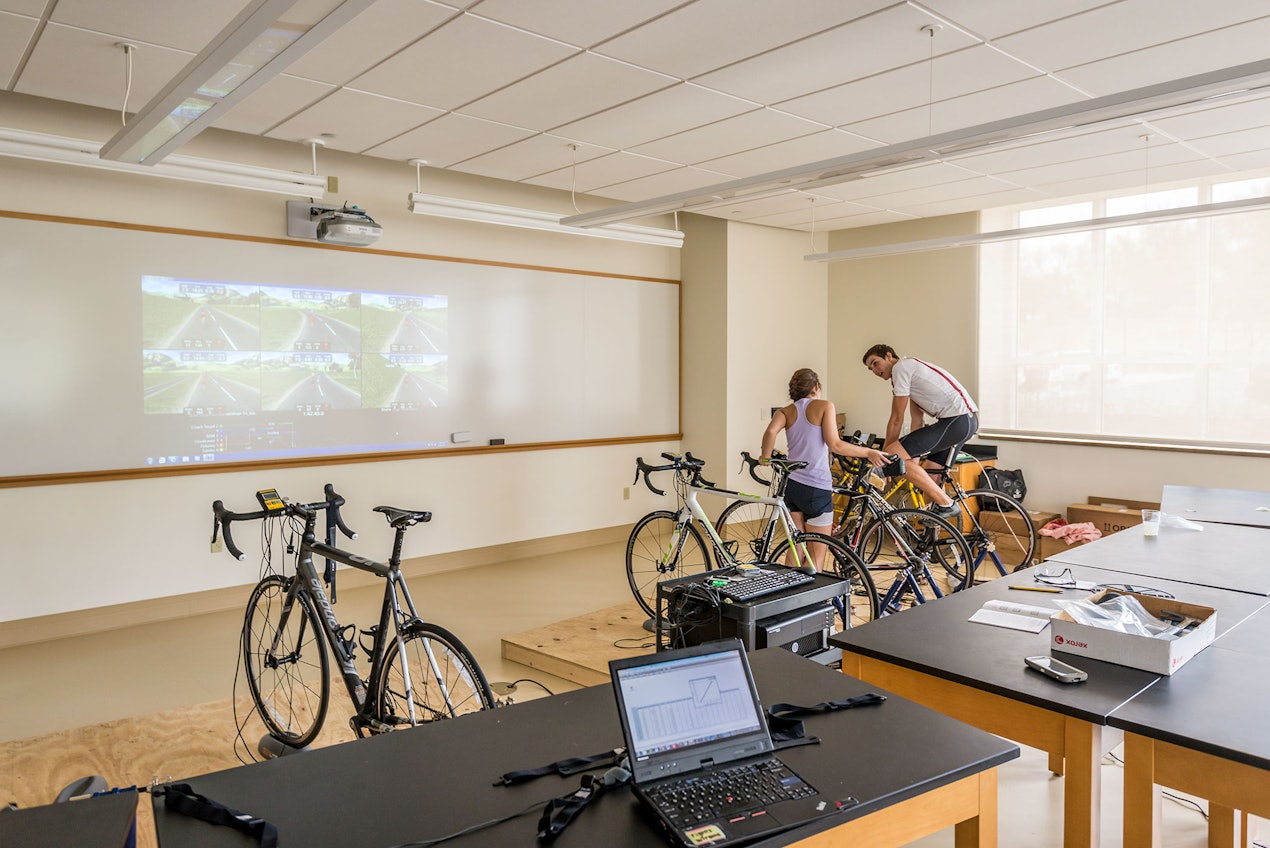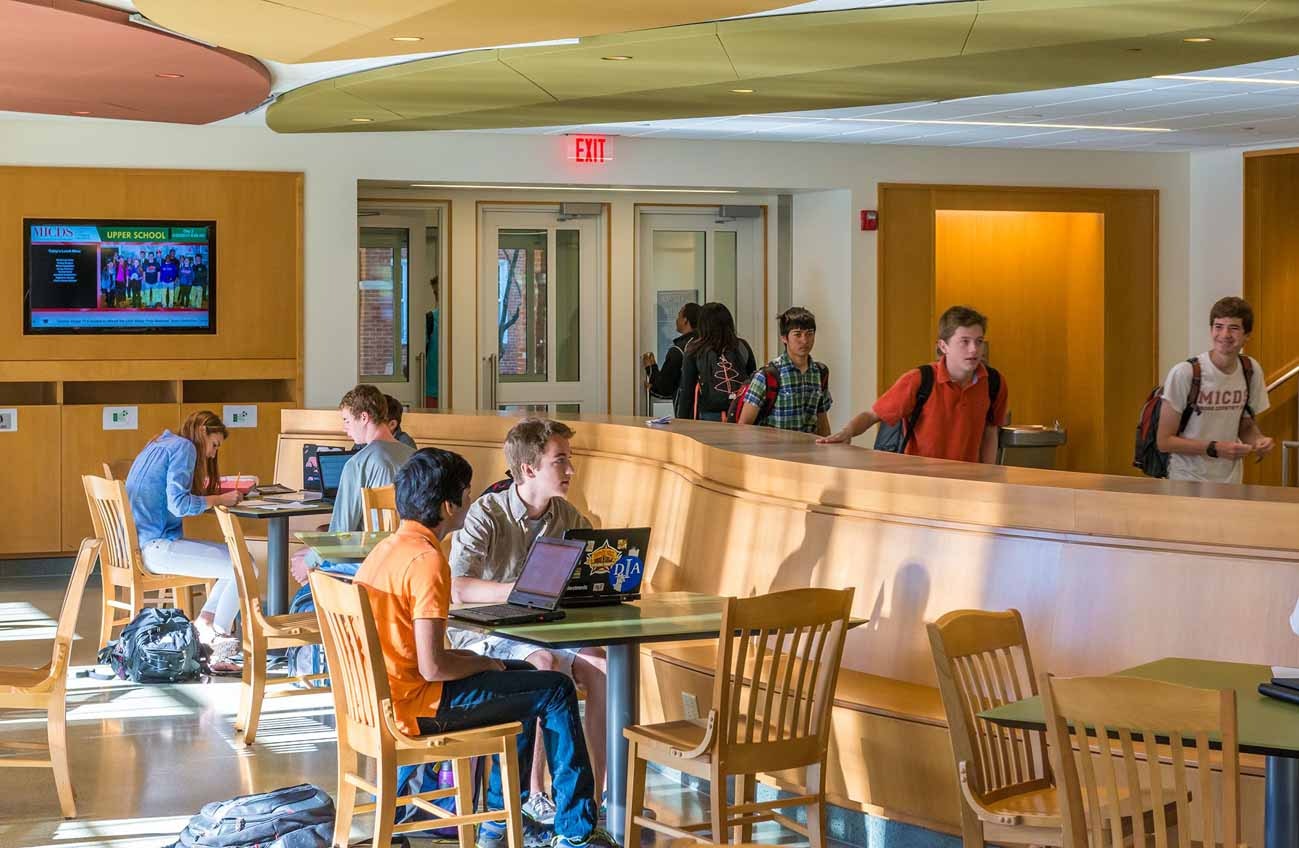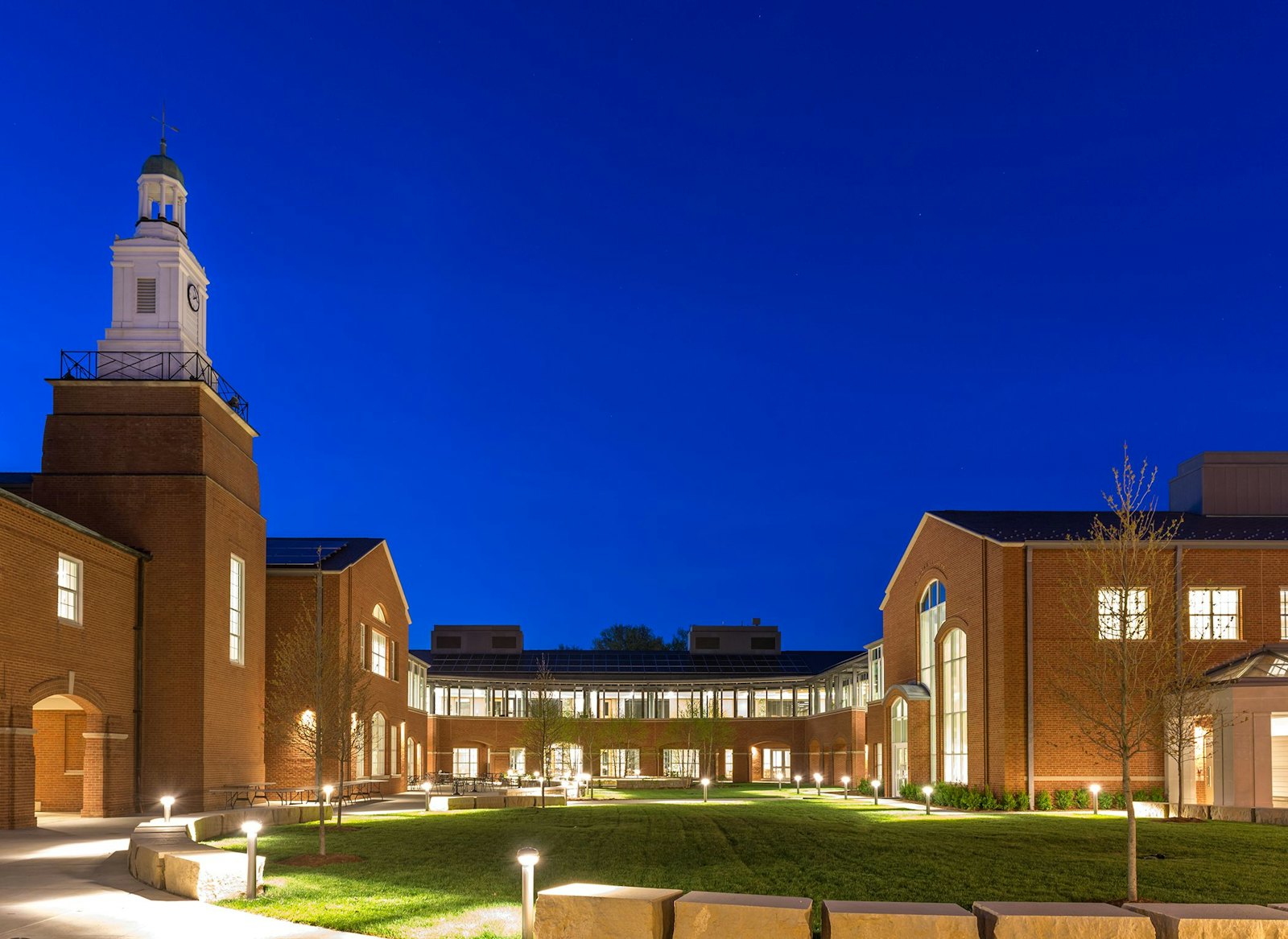McDonnell Hall & Brauer Hall
This science and math building for a leading independent day school was designed to enhance varied curricular approaches for science, technology, engineering, and mathematics (STEM). The design, which opened in the spring of 2014, supports the school’s teaching goals by facilitating proven as well as innovative teaching techniques.
MICDS tasked Centerbrook with creating engaging and flexible spaces geared to the latest pedagogical concepts for teaching science and mathematics in the competitive environment of the 21st century. School officials point to studies that rank American students 17th in science and 25th in math out of 34 developed countries, lagging behind China, Japan, Russia and England.
Located in the heart of the campus, the facility includes McDonnell Hall and Brauer Hall, a Center for Community for the entire school that features an 800-seat amphitheater, small and sociable gathering spaces, an indoor/outdoor fireplace, faculty offices, and common areas with views of a courtyard with plant and vegetable gardens. The new building serves as a bridge between MICDS’s two scholastic neighborhoods: liberal arts and science.
To accommodate the different ways that students learn, math and science spaces are large enough for individual and group study along with lectures, seminars, and hands-on experimentation. Although designed specifically for math and individual sciences, the spaces are deliberately co-mingled to encourage the sharing of ideas and resources.
The mathematics rooms are designed with breakout areas for small study groups to problem-solve or focus on a specific project, while each science room is a combination classroom/laboratory – or “clab” – that melds traditional teaching spaces with laboratories for application-based learning.


“We wanted to provide spaces large enough to allow classrooms to have fully equipped labs for biology, chemistry and physics,” said Lisa Lyle, former Head of School. “Oftentimes, in a setting where classrooms are separate from labs, you lose teachable moments when students ask questions that could easily be answered in a lab setting.”
The 1,200-square-foot clabs are 30 percent larger than typical high school classrooms and allow for both discussion and hands-on examination of the science topic being addressed. The biology and physics labs contain research benches that can be moved and reconfigured for different lessons.
Certified LEED Platinum, the building incorporates sustainable and renewable systems such as solar thermal collectors, thermal windows, photovoltaic cells that collect and make energy, an educational demonstration wind turbine, a rainwater harvesting system to cool the greenhouse and flush toilets, and native landscaping.
The facility also features “dashboards,” at the STEM and Center for Community foyers and online, that allow students to see how much energy the building is collecting and using at any given time. The math and science teachers use this data in their curriculum.


“We love Jim and Todd at Centerbrook! They are passionate about creating learning spaces that support social engagement and collaborative learning, respect the historic nature of other buildings, and are both sustainable and aesthetically wowing.” Lisa Lyle, former Head of School
MORE INFORMATION
Awards
- Citation: Combined-Level School, Architectural Portfolio, American School & University
- Award of Merit, The Illuminating Engineering Society of North America
We're using cookies to deliver you the best user experience. Learn More



